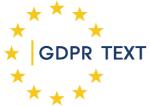(EN)
Documents
Article 29 Working Party, Opinion 2/2012 on Facial Recognition in Online and Mobile Services (2012).
Article 29 Working Party, Opinion 3/2012 on Developments in Biometric Technologies (2012).
EDPB, Guidelines on the use of location data and contact tracing tools in the context of the COVID-19 outbreak (2020).
EDPB, Guidelines 8/2020 on the targeting of social media users (2020):
If a social media provider or a targeter uses observed data to categorise users as having certain religious, philosophical or political beliefs-regardless of whether the categorization is correct/true or not-this categorisation of the user must obviously be seen as processing of special category of personal data in this context. As long as the categorisation enables targeting based on special category data, it does not matter how the category is labelled.
EDPB, Guidelines 06/2020 on the interplay of the Second Payment Services Directive and the GDPR (2020).
Financial transactions can reveal sensitive information about individual data subject, including those related to special categories of personal data. For example, political opinions and religious beliefs may be revealed by donations made to political parties or organisations, churches or parishes. Trade union membership may be revealed by the deduction of an annual membership fee from a person’s bank account. Personal data concerning health may be gathered from analysing medical bills paid by a data subject. Finally, information on certain purchases may reveal information concerning a person’s sex life or sexual orientation.
Moreover, through the sum of financial transactions, different kinds of behavioural patterns could be revealed, including special categories of personal data and additional services that are facilitated by account information services might rely on profiling as defined by article 4 (4) of the GDPR. Therefore, the chances are considerable that a service provider processing information on financial transactions of data subjects also processes special categories of personal data.
(51) Personoplysninger, der i kraft af deres karakter er særligt følsomme i forhold til grundlæggende rettigheder og frihedsrettigheder, bør nyde specifik beskyttelse, da sammenhængen for behandling af dem kan indebære betydelige risici for grundlæggende rettigheder og frihedsrettigheder. Disse personoplysninger bør omfatte personoplysninger om race eller etnisk oprindelse, idet anvendelsen af udtrykket »race« i denne forordning ikke betyder, at Unionen accepterer teorier, der søger at fastslå, at der findes forskellige menneskeracer. Behandling af fotografier bør ikke systematisk anses for at være behandling af særlige kategorier af personoplysninger, eftersom de kun vil være omfattet af definitionen af biometriske data, når de behandles ved en specifik teknisk fremgangsmåde, der muliggør entydig identifikation eller autentifikation af en fysisk person. Sådanne personoplysninger bør ikke behandles, medmindre behandling er tilladt i specifikke tilfælde, der er fastsat i denne forordning, under hensyntagen til at medlemsstaternes nationale ret kan fastsætte specifikke bestemmelser om databeskyttelse for at tilpasse anvendelsen af reglerne i denne forordning med henblik på overholdelse af en retlig forpligtelse eller udførelse af en opgave i samfundets interesse eller henhørende under offentlig myndighedsudøvelse, som den dataansvarlige har fået pålagt. Foruden de specifikke krav til sådan behandling bør de generelle principper og andre regler i denne forordning finde anvendelse, navnlig for så vidt angår betingelserne for lovlig behandling. Der bør udtrykkelig gives mulighed for undtagelser fra det generelle forbud mod behandling af sådanne særlige kategorier af personoplysninger, bl.a. hvis den registrerede giver sit udtrykkelige samtykke eller for så vidt angår specifikke behov, navnlig hvis behandling foretages i forbindelse med visse sammenslutningers eller stiftelsers legitime aktiviteter, hvis formål er at muliggøre udøvelse af grundlæggende frihedsrettigheder.






(EN) The first exception is based on “explicit consent”. Article 9 consent differs from the general notion of consent of article 6 in one important aspect: it must be explicitly provided by the person concerned. It means that the consent must be freely given, specific, informed, and unambiguous, under the definition of article 4 (11), and, in addition to these requirements, it must be “explicit”.
What form of consent is considered “explicit” and thus valid under article 9? The sensitive nature of the data involved entails a consent that goes beyond the regular “statement or clear affirmative action” [article 4 (11)] on the part of the data subject. It means that s/he must give “an express statement of consent” (Guidelines on Consent), even in the case where services are provided on a contractual basis. An explicit consent is needed because there is no contract based exceptions in article 9 (2) a controller can rely on.
The Guidelines on Consent suggest that a written statement or even a signed written statement may be required, even though the GDPR does not prescribe such a form of consent. A signed consent may be relevant if health data are collected, for example, in the context of services offered by a private clinic or a convalescent home. A plastic surgeon may need to gather information about a client’s health condition or share medical information to seek a second opinion from one of her/his colleagues. The managers of a convalescent home will have to gather information about a future pensionary’s health condition to arrange the appropriate services needed during her/his stay.
A signed written statement is not as practical in the digital or online environment. How can a person consent if, for example, s/he buys a plane ticket online and requires special medical assistance at boarding time, during the flight or at her/his arrival at destination? A valid consent will also be difficult to obtain if a person places an online order for buying special eyewear as the seller has to collect health-related information about her/his vision and share it with the manufacturer.
Simply following a link or ticking a box might be regarded as an insufficient consent in these examples. The Guidelines on Consent recommend other forms of consent, like filling in an electronic form, using an electronic signature, recording an oral statement or proceeding with a two-step verification (ticking a box in a form and confirming the consent by email afterward, for example).
Article 9 prescribes that a person must consent “for one or more specified purposes”. The requirement goes beyond the “specific” quality of consent required by article 4 (11). Purposes must be clearly specified, which implies that the consent must be tied to specific data or precise categories of data that the controller will be allowed to process.
You must always remember that the GDPR is not a complete statement on the state of the law on data protection in a particular Member State, and it is particularly true here because there is an exception to the exception. Consent is an invalid basis to process special categories of personal data if a Member State prohibits the lifting of the prohibition for processing special categories of personal data by an individual in its national legislation, as the GDPR allows it.